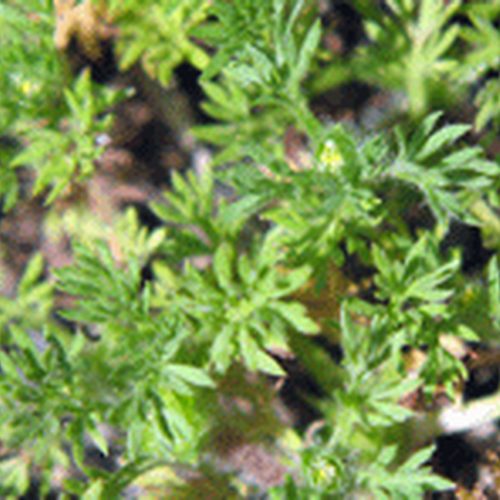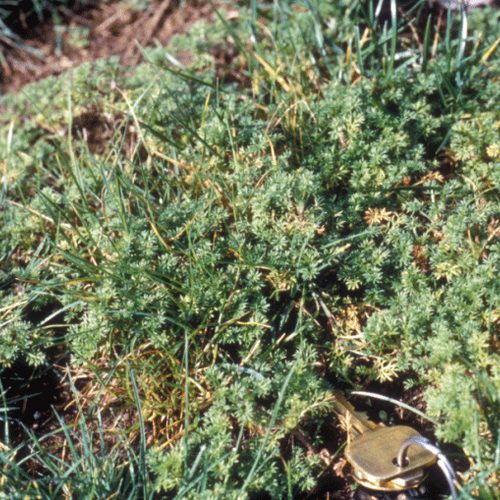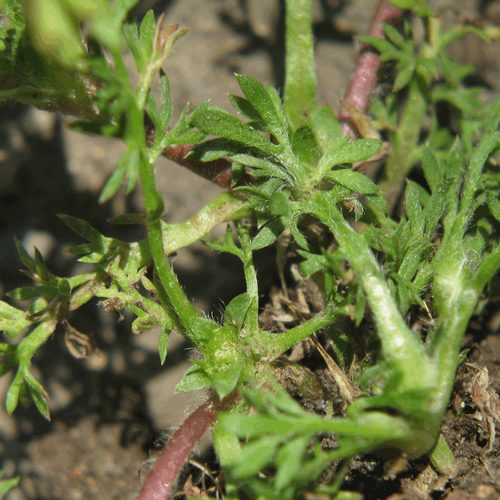Lawnweed
Soliva sessilis

Family: Asteraceae
Other Common Names: lawn burweed, common soliva
Weed class: C
Year Listed: 1998
Native to: South America
Is this Weed Toxic?:
not known to be
Legal listings:
This plant is also on the Washington State quarantine list. It is prohibited to transport, buy, sell, offer for sale, or distribute plants or plant parts of quarantined species into or within the state of Washington or to sell, offer for sale, or distribute seed packets of seed, flower seed blends, or wildflower mixes of quarantined species into or within the state of Washington. Please see WAC 16-752 for more information on the quarantine list. For questions about the quarantine list, contact the Washington State Department of Agriculture's Plant Services Program at (360) 902-1874 or email PlantServices@agr.wa.gov.
Why Is It a Noxious Weed?
It produces very sharp seeds (burs) that can puncture skin and attach themselves to tires. It can out-compete perennial grasses of managed lawn areas. It dies back in the summer leaving open, bare areas, which contribute to its spread. Lawnweed was changed from a Class B to a Class C noxious weed in 2013.
How would I identify it?
General Description
Lawnweed is a low growing winter annual. The plant will grow to about two inches tall, with a spread of six inches in diameter.
Flower Description
Small flowerheads occur in leaf axils from February to July. Flowerheads are made up of greenish-translucent disk flowers and lack ray flowers.
Leaf description
Plants have basal leaves (cluster of leaves at base of stem) and alternately arranged stem leaves. Leaves are 0.4 to 0.8 inches and are pinnately lobed, giving them a feathery appearance.
Stem description
Each plant has one to ten, light to dark colored stems. These stems grow from the base of the plant and they can be hairy to sparsely hairy, often with purple-spots.
Fruit Seed Description
The flat, hard seeds (achenes) are small, light-weight, and tipped with serrated spines, essentially forming a bur, that makes dispersal by human activities common.
Where does it grow?
It is found in managed perennial grass areas usually associated with heavy foot traffic, public swim areas, and boat launches of public lakes, watered lawns, golf courses, and hard-packed soils near paths and roadsides. Please click here to see a county level distribution map of lawnweed in Washington.
How Does it Reproduce?
It is a winter annual and reproduces from seed. Germination begins early and seedlings develop rapidly, resulting in dense local cover and eliminating competition from neighboring vegetation.
How Do I Control It?
General Control Strategy
Establishing thicker lawns and appropriate timing herbicide applications should help prevent the establishment of lawnweed.
Mechanical Control
.
Cultural Control
Lewis County removed infested ground cover and replaced with sod.
Biological Control
.
Herbicide Control
Please refer to the PNW Weed Management Handbook, or contact your county noxious weed coordinator.
For More Information
See our Written Findings for more information about lawnweed (Soliva sessilis).
Lawnweed information from the Garry Oak Ecosystems Recovery Team








